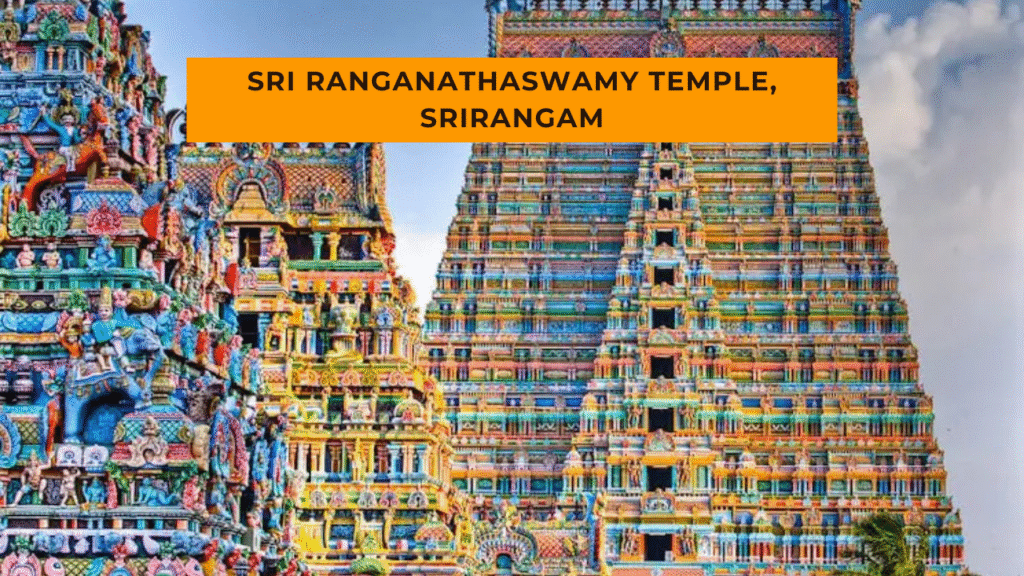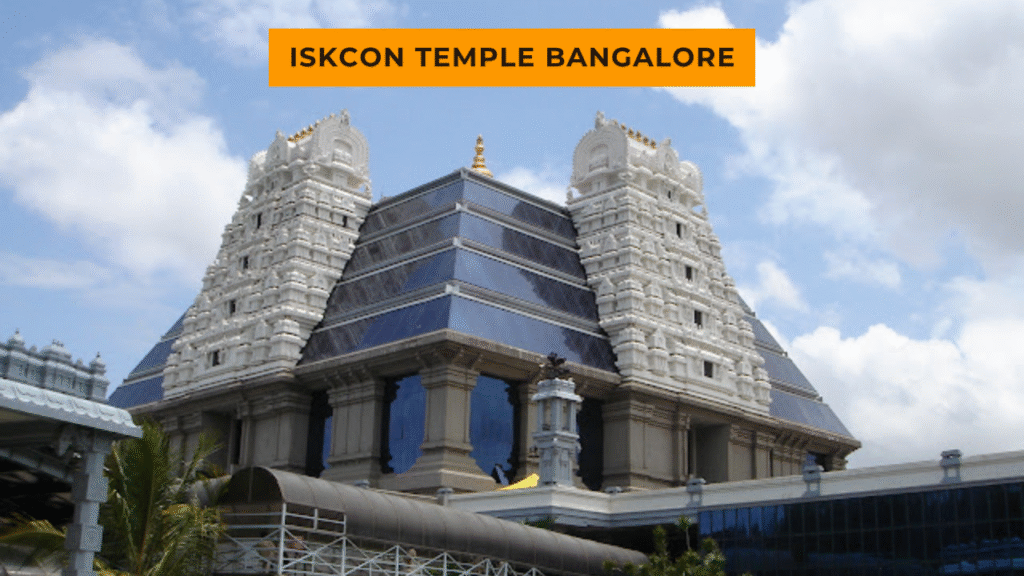Located in the sacred town of Dwarka in Gujarat, the Dwarkadhish Temple, also known as the Jagat Mandir, is one of the most revered and ancient temples in India. Dedicated to Lord Krishna, the temple stands as a powerful symbol of faith, devotion, and divine history. It is not only a religious center but also a significant spiritual destination, forming a part of the Char Dham Yatra, which includes Badrinath, Puri, Rameswaram, and Dwarka.
| Temple Name | Dwarkadhish Temple (Jagat Mandir) |
| Location | Dwarka, Gujarat, India |
| Presiding Deity | Lord Krishna (as Dwarkadhish – “King of Dwarka”) |
| Original Construction | Believed to be over 2,500 years old, built by Vajranabh (Krishna’s grandson) |
| Current Structure | Reconstructed during medieval period, majorly by 15th–16th century rulers |
| Architecture Style | Chalukya style with 78-meter high shikhara and 56-pillared mandapa |
| Special Entry Gates | Moksha Dwar (Entry), Swarga Dwar (Exit) |
| Major Festivals | Janmashtami, Holi, Diwali, Annakut |
| Darshan Timings | 6:30 AM – 1:00 PM, 5:00 PM – 9:30 PM |
| Nearest Railway Station | Dwarka Railway Station (2 km away) |
| Nearest Airport | Jamnagar Airport (137 km) |
| Nearby Attractions | Gomti Ghat, Rukmini Devi Temple, Bet Dwarka, Nageshwar Jyotirlinga |
| Spiritual Importance | One of the Char Dham and Sapta Puri pilgrimage sites |
Historical and Mythological Significance
The city of Dwarka holds a special place in Hindu mythology as it is believed to be the capital of Lord Krishna’s kingdom. After leaving Mathura, Lord Krishna established his kingdom on the western coast of Saurashtra, where the present-day Dwarka stands. The name Dwarkadhish translates to “King of Dwarka”, one of Lord Krishna’s many names.
The temple is believed to have been originally built by Vajranabh, the great-grandson of Krishna, more than 2,500 years ago. Over time, the structure has undergone multiple reconstructions, especially during the reign of Gujarat’s rulers, due to invasions and natural calamities. Today, it stands as a magnificent blend of devotion, mythology, and history.
Architectural Grandeur of the Temple
The Dwarkadhish Temple showcases Chalukya style architecture, carved from soft limestone. The temple rises to a height of around 78 meters (256 feet) and is adorned with intricately carved sculptures and domes. The main spire (shikhara) of the temple is topped with a flag that is changed five times a day, and this flag bears the symbols of the sun and moon, representing Krishna’s rule across time.
A prominent feature is the 56-pillared hall (mandapa) that leads to the Garbhagriha (inner sanctum) where the deity of Lord Krishna as Dwarkadhish resides. The idol is made of black marble and is depicted in a four-armed form, holding the conch, discus, mace, and lotus.
The temple has two primary gates – the Moksha Dwar (door to salvation) for entry and the Swarga Dwar (door to heaven) for exit, adding symbolic meaning to the pilgrimage.
Religious Importance and Devotee Beliefs
Devotees believe that visiting the Dwarkadhish Temple washes away sins and grants moksha (liberation). The temple holds a central role in the Vaishnavite tradition and attracts millions of pilgrims, especially during important Krishna-related festivals.
Many worshippers perform a ritual bath in the Gomti River, which flows beside the temple, before entering the sanctum. The temple priests perform daily poojas, aartis, and rituals, strictly adhering to Vaishnava traditions. The energy and devotion found within the temple premises is something that leaves a lasting spiritual impression.
Major Festivals Celebrated
The temple comes alive with grandeur and festivity during celebrations like:
Janmashtami, which marks the birth of Lord Krishna and is observed with fasting, bhajans, drama performances, and midnight celebrations of Krishna’s birth.
Holi is celebrated with colors, chants, and spiritual songs in devotion to Krishna.
Diwali and Annakut are celebrated with offerings of hundreds of food items to the deity, symbolizing abundance and divine love.
Every festival at Dwarka becomes a vibrant celebration of Krishna’s life, legacy, and love for his devotees.
The Char Dham Connection
The Dwarkadhish Temple holds a key position in the Char Dham Yatra, established by Adi Shankaracharya in the 8th century. Each Dham is located in a different part of the country, representing the four directions – Dwarka in the west, Puri in the east, Badrinath in the north, and Rameswaram in the south.
A pilgrimage to Dwarka is considered highly meritorious and spiritually rewarding. For Vaishnavites, it is also a part of the Sapta Puri, the seven most sacred Hindu pilgrimage centers.
Timings and Daily Rituals
The temple opens early in the morning and remains active throughout the day with various rituals. The daily darshan schedule includes multiple aartis and bhog offerings, conducted with devotion and precision.
| Darshan Sessions | Timings |
|---|---|
| Morning Darshan | 6:30 AM – 1:00 PM |
| Evening Darshan | 5:00 PM – 9:30 PM |
| Mangala Aarti | 6:30 AM |
| Shringar Aarti | 10:30 AM |
| Sandhya Aarti | 7:30 PM |
Visitors are advised to reach early during festival days, as large crowds gather to witness the grand rituals.
How to Reach Dwarkadhish Temple
Dwarka is well-connected by road, rail, and air. The Dwarka Railway Station is about 2 kilometers from the temple and connects major cities like Ahmedabad, Jamnagar, and Rajkot.
The nearest airport is Jamnagar Airport, about 137 kilometers away, with taxi services available to reach Dwarka.
Buses from all major cities of Gujarat, including Ahmedabad and Vadodara, regularly run to Dwarka. Pilgrims can also use private taxis or car rentals for a more comfortable journey.
Nearby Attractions in Dwarka
Gomti Ghat, located near the temple, is considered sacred and used for ritual bathing.
Rukmini Devi Temple, dedicated to Krishna’s consort, lies just a few kilometers away.
Bet Dwarka, believed to be the original residence of Lord Krishna, is an island accessible by boat.
Nageshwar Jyotirlinga Temple, one of the 12 Jyotirlingas, is a must-visit for Shiva devotees.
Dwarka Beach and lighthouse also provide serene settings for reflection and relaxation.



